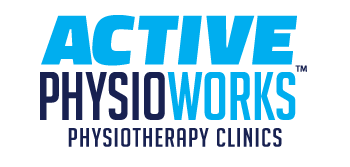No Pain No Gain?
Aug 12, 2016
I have been a massage therapist for years and I originally started my training in Bowen Therapy (http://thebowentechnique.com/what-is-the-bowen-technique/), which is extremely gentle. My motivation for learning this technique was it’s effectiveness in treating clients who were very fragile (stroke patients and acute brain injury). Even if they had wanted deep pressure, it wouldn’t have been healthy for them because they were in poor condition; their tissues were not as resilient as a healthy person’s, and their central nervous system (CNS) would have thrown them into a fight or flight response, which achieves the exact opposite of long-term healing.
As I began to expand my massage practice and see a more diverse range of clients, a pattern started to emerge - people wanted pressure, and a lot of it. There seemed to be a disturbing trend: clients thought that MORE pressure equaled MORE healing, which equaled MORE bang for their buck. I thought to myself, “Why would anyone think this? Why does more pressure (which is often associated with pain) result in a more therapeutic experience?” The answer is very simple and, in my opinion, has more to do with how we are conditioned to think than how effective different massage techniques may be.
Have you ever had a headache and gone to the drugstore for Tylenol or something similar? If you saw “regular strength” beside “extra strength”, which bottle were you reaching for? Extra strength, of course. Heck, if there was Extra Extra Mega strength, you’d get that. You want to nuke that headache into oblivion. This type of advertising is all around us. Lots of catch words like “extra”, “improved”, “enhanced” motivate you to buy certain products just based on how it makes you feel when you see it. I believe that certain people carry this mindset over to their massage treatments. Since massage has a very simple engagement (tactile sensation), it is easy for people to categorize the treatments into “light pressure”, “medium pressure” and “deep pressure”. Deep pressure must be better than light pressure. If I have sore shoulders, light pressure is like taking a “adequate strength” Tylenol. If pressure was the only thing going on in a massage, that line of thinking might be justified. There is a LOT more going on with a massage than just the pressure being used. Tissues can be manipulated in a variety of ways - fascial spreading, cupping, neuromuscular release and swedish effleurage, just to name a few. It’s not just force applied DOWN into the tissues that matters.
Now, I don’t want to disregard the importance of pressure during a massage. There is an appropriate amount for every client, and that amount depends on many factors. What I want to see is a movement away from the “no pain, no gain” mentality that I often see. Muscles don’t respond to being forced to relax. That’s like trying to get a hyper child to calm down by yelling at them. Trauma doesn’t initiate healing, it inhibits it. If you are getting cold sweats during a massage and are sore for days after, you have endured trauma to your body. “Oh, but after a day or two of soreness I feel much better!!” Maybe you feel recovered from the massage, but “better” is debatable.
Okay, so there are people that actually enjoy a painful massage and have been receiving them for years. That’s great, if that works for you. But if you are one of those people who wonders about how much pressure is the right amount, please do not default to “more must be better”. I have seen amazing results from the lightest touch. I had a client years ago who had suffered from a stroke. Her entire right side was paralyzed, and her right arm was at risk of developing a contracture from being so tightly engaged in elbow flexion. She received daily manual therapy where another therapist would try to force her elbow to straighten. These sessions were often 45 minutes long and had no long-lasting effects. Her body simply did not respond to being forced. I would spend 10 minutes gently applying Bowen release techniques and her arm would relax and straighten. The effects would last for hours, sometimes even days.
Pay attention to your body and remember that your body does it’s best healing when it is relaxed, loose and in a parasympathetic state (“rest and digest”). A good massage therapist will apply appropriate pressure for you and your body.
I perform Bowen Technique as well as remedial/therapeutic massage and cupping at the Tudor Glen location. I’d love to show you an effective massage treatment. Call (780) 458 8505 to book an appointment.
Mark Ellis, RMT, CBP (Certified Bowen Practitioner)
References
https://www.painscience.com/articles/pressure-question.php : accessed August 10, 2016
http://oxfordmassagestudio.com/too-much-pressure/ : accessed August 11, 2016
“Mind over Medicine” by Rankin, Lissa
Please add your bio info through your member profile page, or through your dashboard.

